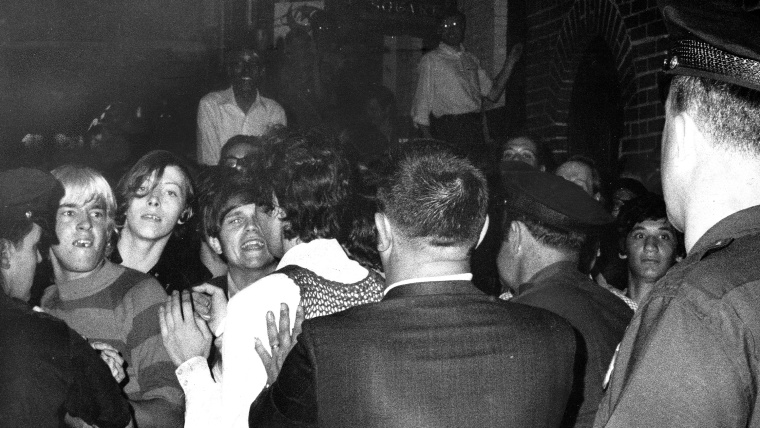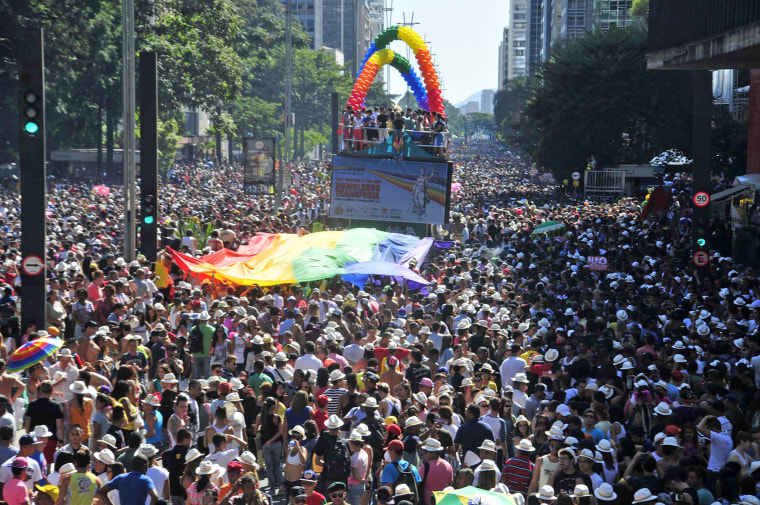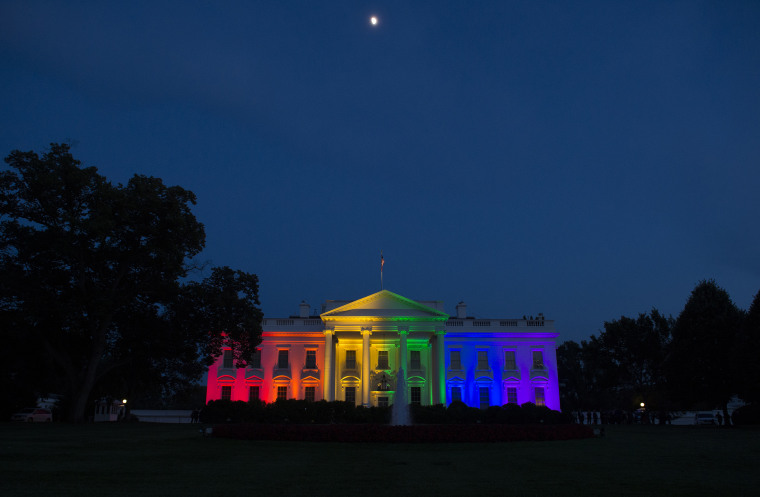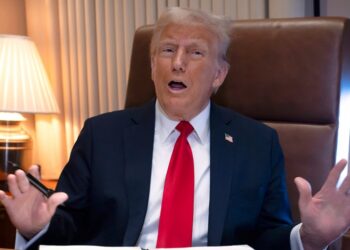Here are the answers to some of the most common questions about LGBTQ Pride Month, annual LGBTQ Pride parades and the iconic 1969 Stonewall uprising.
What is LGBTQ Pride Month?
LGBTQ Pride Month is a commemoration of the lesbian, gay, bisexual, transgender and queer community that is part celebration and part protest. It is often associated with massive parades and parties that honor the community’s joys and accomplishments. But the rallies, marches and political actions can be just as important to draw attention to the issues still facing the community.
How did LGBTQ Pride Month start and why is it in June?
LGBTQ Pride Month traces its roots back to the 1969 Stonewall riots, which started on June 28, 1969. The first Pride marches started the following year, on June 28, 1970, to commemorate the multiday riots, and these one-day celebrations eventually evolved into a full month of LGBTQ pride.

According to a search of Newspapers.com, an online archive of more than 26,000 newspapers, the first mention of “Pride Month” was in a June 5, 1972, issue of Pennsylvania’s Delaware County Daily Times. In the article, gay activist Byrna Aronson talks about the gay rights rallies popping up across the country and shortly after says, “We call it Gay Pride week and Gay Pride Month, the whole month of June.”
The first time The New York Times mentioned Pride Month, according to its online archive, was in a 1989 article about Mayor Ed Koch being heckled as he “proclaimed the month of June as Lesbian and Gay Pride and History Month” at a ceremony in Greenwich Village.
What are the Stonewall riots?
In the early-morning hours of Saturday, June 28, 1969, members of the New York City Police Department staged a raid at the Stonewall Inn, a mafia-run gay bar in Manhattan’s Greenwich Village neighborhood. While such raids were not uncommon at NYC gay bars at the time, what was unique on this night is that the patrons had decided to fight back.
The Stonewall riots, also known as the Stonewall uprising and the Stonewall rebellion, lasted several days and are credited as the spark that ignited the modern-day LGBTQ rights movement.
In June 2016, President Barack Obama designated the Stonewall Inn and the surrounding area a national monument, making it the first national monument honoring LGBTQ rights.
Check out these stories for more info:
When was the first LGBTQ Pride march?
The first Pride marches in the U.S. took place on June 28, 1970, exactly one year after the start of the 1969 Stonewall riots. In New York, organizers dubbed their event the Christopher Street Liberation Day March. In a New York Times article the following day, the paper wrote: “Thousands of young men and women homosexuals from all over the Northeast marched from Greenwich Village to the Sheep Meadow in Central Park yesterday proclaiming ‘the new strength and pride of the gay people.’”

The same day as the NYC march, Los Angeles held a “Christopher Street West” celebration on Hollywood Boulevard that drew thousands. According to LGBTQ historian Lillian Faderman, there were also two “very small marches” in San Francisco and Chicago that year, but New York City’s was the largest by far.
Check out this story for more info:
What are the biggest LGBTQ Pride marches in the world?
New York City continues to be a global hub for Pride celebrations, drawing millions of people to its annual Pride March in June, which extends from midtown Manhattan to Greenwich Village.

Both São Paulo and New York City have drawn crowds of about 4 million people to their Pride celebrations, making them the largest events in the world. Cities like Madrid, Toronto and San Francisco also regularly draw hundreds of thousands, and sometimes millions, of revelers.
When was the rainbow Pride flag created?
The rainbow Pride flag, the most enduring symbol of the LGBTQ rights movement, was created by seamster Gilbert Baker nearly half a century ago for the San Francisco Gay Freedom Day Parade in June 1978, which drew hundreds of thousands of revelers.
“Up until the rainbow flag in 1978, the pink triangle had really functioned as kind of the symbol of homosexuality and gay rights, but it was designed by Hitler. It was put on us in the same way that they used the Star of David against Jews. It was a whole code of symbols that were used to oppress people,” Gilbert told NBC News in 2016. “So we needed something that was from us.”








